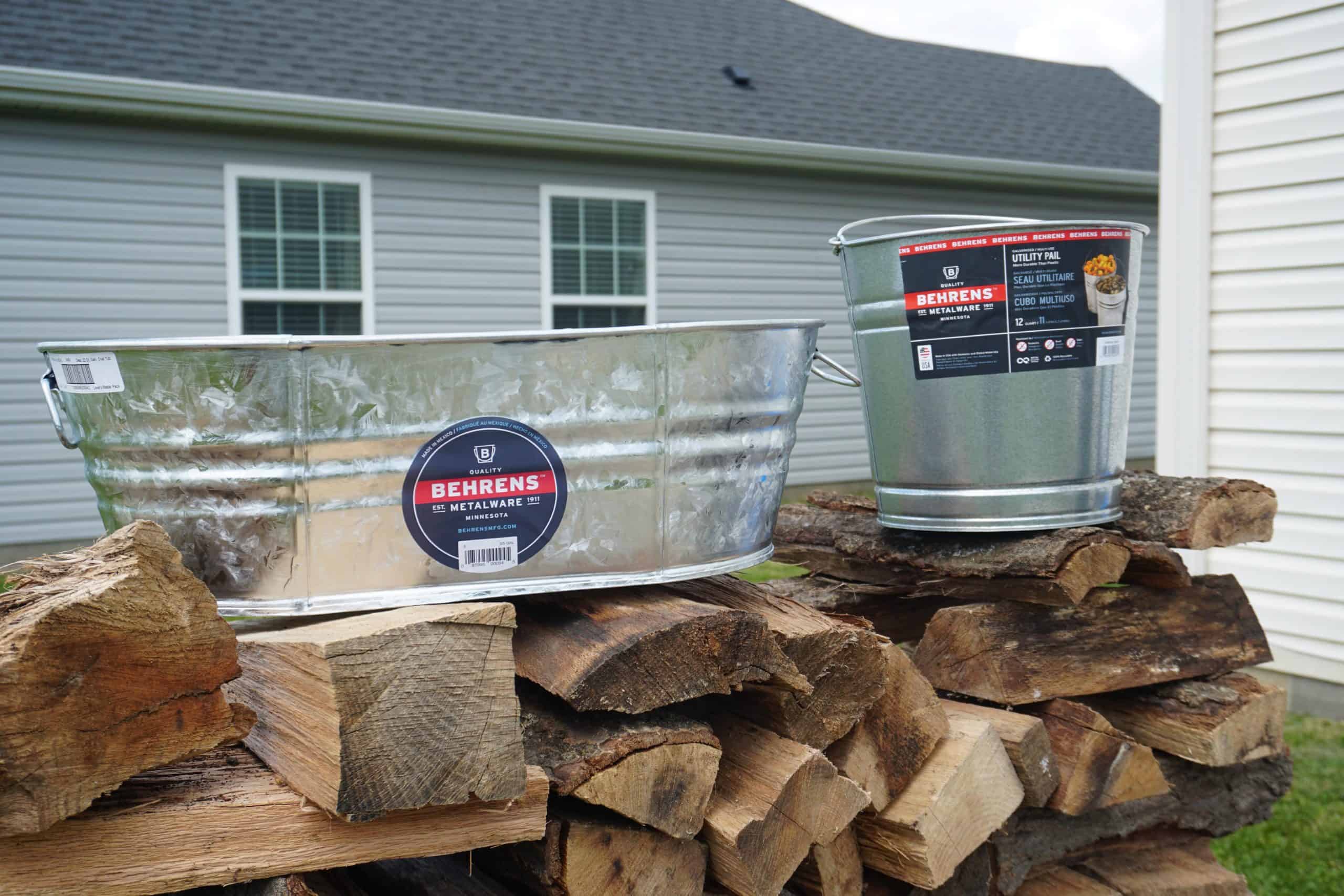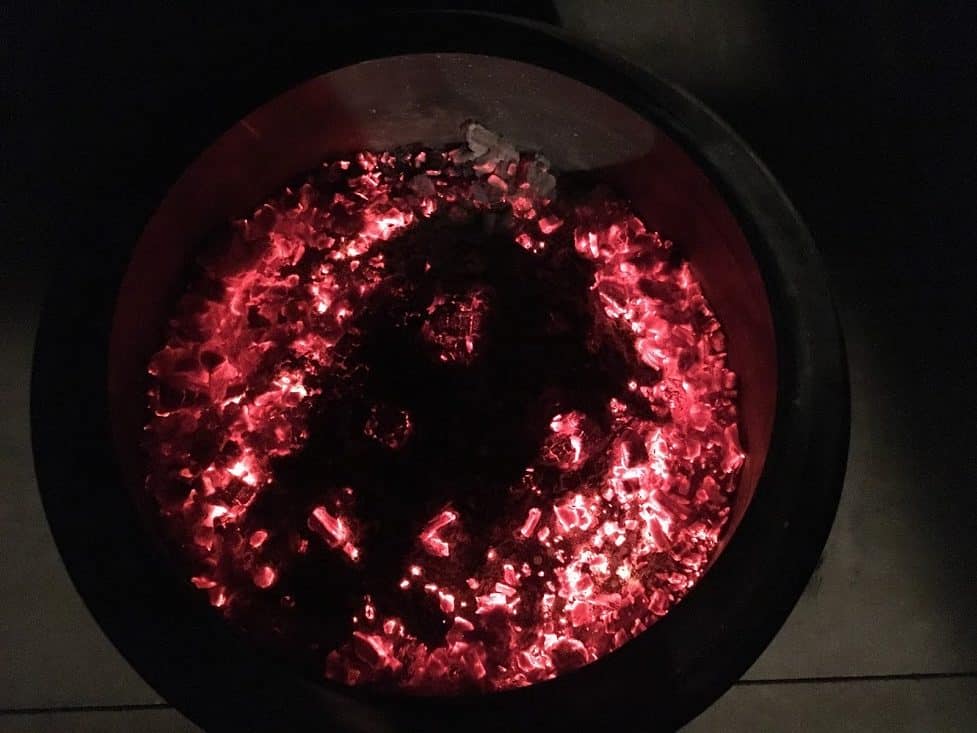At some point, the long summer nights and exciting stories told over the fire come to an end. Hopefully, your friends and family will wait until the fire has just about died before deciding to wrap up for the night.
Can you leave a fire pit burning overnight? Whatever your situation and even if you’ve had a few too many drinks, it’s your responsibility to ensure the fire is completely putting out solo stove and will stay out through the night. Luckily, it’s very easy to do, and with a little prep work, you can move the party inside without skipping a beat. So we are going to discuss how to safely put out a fire pit.
What’s the Quickest Way to Put a Fire Out?
Before anyone with a metal fire pit, like a Solo Stove, Breeo, or other store-bought one interrupts, you don’t need to pour the water on the fire. Instead, the best way to put out a fire pit is using a large metal bucket or tub, like the ones seen below, drop the remaining coals into the metal bucket.
Here is an example of a popular brand of metal buckets and tubs that are perfect for extinguishing hot coals. The bucket may get warm, but it’s not going to melt like plastic, and the coals will be completely submerged. Your bonfire may still be warm, but by using a coal shovel, you can get any remaining embers and place this in the bucket.
Your fire pit will eventually cool down, and you can put the cover on it before going to bed.
Built with the highest quality hot dipped steel for a vintage/classic look, the 5.5 gallon galvanized oval tub is durable and made to last.
We recommend Behren’s Galvanized Steel Utility Bucket
Built with the highest quality material, this utility pail is durable, made to last, and comes in both galvanized and hot dipped galvanized steel.
Other Methods to Extinguish a Fire Pit
Let the Fire Die on Its Own
This is fairly self-explanatory: stop adding wood or other things to the fire. Ask your family or guests how much longer they’ll want to stay out. A well-seasoned log, depending on the type of wood, will burn from anywhere from 1-3 hours.
Your fire should look something like the image above when you’ve spread all the remaining coals around. Notice how they’re all glistening in the night. Beautiful right?
After the fire has been reduced to mostly coals, use a pair of fire tongs or a shovel to spread the embers around the pit. This brings oxygen into all the coals and speeds up the burn.
CAUTION
The danger of leaving the coals unattended is a lot of things can happen overnight. The wind could pick up and carry the coals elsewhere, the fire pit could get tipped over, or the heat could spark a dry fuel source nearby. Children, pets, and wild animals are always a concern too.
Regardless, each of those scenarios poses the risk of the fire starting back up again, and that’s something that can potentially cause a lot of damage to your backyard and neighbor’s backyard.
Putting Out a Fire Pit with Water
A better solution is to use water. After the coals have all been spread around the pit, spray them down thoroughly with the garden hose. You may also shovel them into a bucket of water until they’re fully submerged.
Can you pour water on a fire pit? Dumping water or spraying it onto your fire pit isn’t recommended. If you’re using a store-bought fire pit (<$100), you’ll probably only get a few seasons out of it anyway, and it won’t hurt that much. However, for more expensive setups, the drastic temperature change puts stress on the steel and welds.
The steel expands the hotter it gets, and dumping water on it cools it quickly and causes the metal to contract quickly. This is known as thermal expansion and puts stress on the welds or other joints. The concept is the same if you pour hot water into a glass that has been sitting in the freezer like in the video below.
If you have an above-ground store-bought fire pit or are using something like a Breeo or Solo Stove, the bucket method is your best bet. This will protect your fire pit from coming in contact with water and rusting and ensure the fire is completely out.
Suffocate or ‘Snuff’ the Fire
This is a safer way to let the fire die on its own. After you’ve spread the coals out, place a larger piece of metal, like a trash can lid, or appropriately sized ‘snuffer’ on top of the fire pit. What this does is it eliminates air from reaching the fire and suffocating it. Your fire pit may sell one specially made for it. Otherwise, you’ll need to use something like a trash can lid, grill lid, or a custom-made one.
The fire must be completely sealed from any air reaching it. A fire pit like a Solo Stove or Breeo can be suffocated, although it will take longer as there are additional holes that you cannot cover. Keep in mind the fire pit will still be hot for several hours, and the lid, or snuffer, will be hot to the touch as well.
CAUTION
Be sure children or pets will not come in contact with the lid or other parts of the fire pit as it’s cooling down. The lid and fire pit will be very hot to the touch for several hours before cooling down.
Put Out a Fire Pit Using Sand or Dry Dirt
You probably won’t be using this method in a residential or home setting, but if you’re out camping, this is good information to have.
Again, this method is straightforward: shovel the dirt or sand on top of the fire until it is completely covered. You’ll want to make sure there are no fuel sources nearby, as it will take several hours for the fire to cool down fully.
Other Fire Pit Extinguishing Tips
Prepare for the Night Ahead of Time
Make it easy on yourself at the end of the night. Make sure you already have a large bucket or tub of water waiting close by. Have the coal shovel and fire tongs sitting close to the fire pit. Set out only the amount of kindling you’ll need to get the fire going and bring up enough firewood ahead of time.
Don’t forget any other campfire essentials like s’mores, hotdogs, drinks, etc. Pack those in a cooler and keep them close by the fire before everyone else gets there.
PRO-TIP
After extinguishing the fire, your bucket or cooler serves as a great way to collect trash and bring everything inside. It helps to pack a flashlight in your cooler, chair, or pocket so you can see when the flame goes out.
Keep the Right Supplies on Hand
Safety is paramount. At the bare minimum, you should have your fire pit in the proper location – away from any overhanging vegetation, dry fuel sources, etc., and you should always have a fire extinguisher or bucket of water on hand.
It doesn’t take long for a spark to catch in the wind and start a fire elsewhere.
Using a spark screen will help keep any embers from popping out of the firepit. If you will need to move your fire pit after using it (you never know when it’s going to rain), having some heat-resistant mitts or thick oven mitts on hand is helpful.
Listen to the Fire
When you’re using water to put the fire, be sure to listen to what sounds the fire is making. You’ll hear some sizzling noises on the first contact. Keep pouring water until you put out any remaining visible embers, and you cannot hear any more sizzling sounds.
FAQs
Question: What should I do with the ashes from a backyard fire?
Answer: If you have a garden, the leftover ashes can add some useful carbon to your plants or compost. Otherwise, the ashes can be used to fill holes and simply tossed in the trash. The best way to do that is to use a coal shovel or shop vac for larger fire pits.








